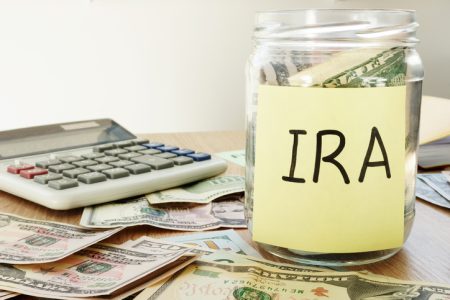Cashing out a 401(k) at age 62 is allowed, but it comes with trade-offs many savers will want to consider. Withdrawals at this age avoid the 10% early withdrawal penalty, though income taxes still apply. Taking a lump sum of part of the account balance could offer immediate access to funds for retirement expenses or other needs. However, a lump sum withdrawal may also lead to a large current tax bill and limit the account’s long-term growth potential.
A financial advisor can help you estimate how taxes, investment gains and future income will be impacted by cashing out a 401(k).
When Can I Take Money Out of My 401(k)?
401(k) plans are designed for retirement savings, but funds can be accessed before retirement in certain situations. The rules for accessing the money vary depending on age and circumstances.
Withdrawals After Age 59 ½
Once you reach age 59½, you can take money out of your 401(k) without facing the 10% early withdrawal penalty. Regular income taxes still apply to traditional 401(k) distributions, while Roth 401(k) withdrawals are tax-free if the account has been open for at least five years.
Separation from Employer After Age 55
If you leave your job at age 55 or older, you may qualify for a “separation from service” exception, allowing penalty-free withdrawals from that employer’s 401(k). This Rule of 55 does not apply to IRAs or to 401(k) plans from previous employers unless consolidated.
Required Minimum Distributions (RMDs)
Starting at age 73 (75 for people born in 1960 or later), the IRS mandates annual minimum withdrawals from traditional 401(k) accounts. Failing to take RMDs can trigger a steep penalty, although recent law changes have reduced the penalty amount from 25% to 10% of the shortfall. Roth 401(k)s, beginning in 2024, are no longer subject to RMDs during the account holder’s lifetime.
Cashing Out Your 401(k) at Age 62
Cashing out a 401(k) at age 62 is allowed under IRS rules, but the financial consequences can vary depending on how and when the money is used.
Income Taxes on Withdrawals
Withdrawals from a traditional 401(k) are treated as ordinary taxable income. Large distributions can push you into a higher tax bracket for the year, potentially increasing the tax owed on Social Security benefits and other retirement income. In contrast, Roth 401(k) withdrawals may be tax-free if certain conditions are met.
Loss of Future Investment Growth

Taking a lump sum reduces the balance available for future investment gains. Even a few more years of compounding returns can make a noticeable difference in the size of retirement savings. Cashing out early may mean relying more heavily on other income sources later in retirement, especially as healthcare costs and inflation increase over time.
For example, if you have $300,000 in your 401(k) at age 62 and leave it invested earning an average 6% annual return, it could grow to roughly $402,000 by age 67 without any additional contributions. Cashing out at 62 would forgo that $100,000 in potential growth, which could have provided additional income throughout retirement.
Impact on Retirement Planning
Cashing out can shift the structure of your retirement plan. Without reinvestment, the funds could be depleted faster than anticipated, potentially requiring lifestyle adjustments or reliance on smaller income sources like Social Security.
Pros and Cons of Cashing Out Your 401(k) at Age 62
Cashing out a 401(k) at 62 offers immediate access to retirement savings, but it can also create long-term financial challenges. The decision affects taxes, investment growth and the stability of future income streams.
Pros
- Penalty-free access: At 62, withdrawals avoid the 10% early withdrawal penalty that applies before age 59 ½.
- Immediate liquidity: A full or partial cash-out provides flexibility to cover living expenses, pay off debt or fund large purchases.
- Control over funds: Accessing the full balance provides freedom to invest, spend or allocate the money as desired.
Cons
- Taxable income spike: Large withdrawals can push you into a higher tax bracket and reduce the net amount you keep.
- Reduced growth potential: Removing funds without reinvestment stops the compounding process, which can shrink the size of available assets later in retirement.
- Longevity risk: Fully cashing out increases the risk of depleting savings too quickly, especially if retirement lasts 25 years or longer.
Alternatives to Cashing Out Your 401(k) at Age 62
Cashing out a 401(k) entirely is one option, but not necessarily the most appropriate for all situations. Several strategies can help maintain financial flexibility while preserving long-term retirement assets.
One option is to take periodic partial withdrawals as needed, often referred to as “ad hoc distributions.” This method allows you to access only the amount required for immediate expenses while keeping the rest invested. Once you turn 73, you will have to start taking partial withdrawals to satisfy RMD rules.
Another approach is rolling the 401(k) into an IRA. An IRA can offer broader investment choices and potentially lower fees, along with the ability to set up systematic withdrawal plans.
Ultimately, each alternative provides a different way to manage tax exposure, investment growth and income needs without fully depleting retirement savings at once.
Bottom Line

Accessing 401(k) savings at 62 opens the door to greater financial flexibility, but it also reshapes how retirement income might unfold over the decades ahead. Weighing immediate needs against future goals can highlight whether a full cash-out, partial withdrawal, or a more gradual strategy better suits your plans. Thoughtful choices today can influence how comfortably your savings support you in later years.
Retirement Planning Tips
- A financial advisor can help you determine when is the best time to claim Social Security and manage other factors to maximize your benefits. SmartAsset’s free tool matches you with vetted financial advisors who serve your area, and you can have a free introductory call with your advisor matches to decide which one you feel is right for you. If you’re ready to find an advisor who can help you achieve your financial goals, get started now.
- SmartAsset’s Social Security calculator can help you estimate future monthly government benefits.
Photo credit: ©iStock.com/DMP, ©iStock.com/shapecharge, ©iStock.com/Kobus Louw
Read the full article here









